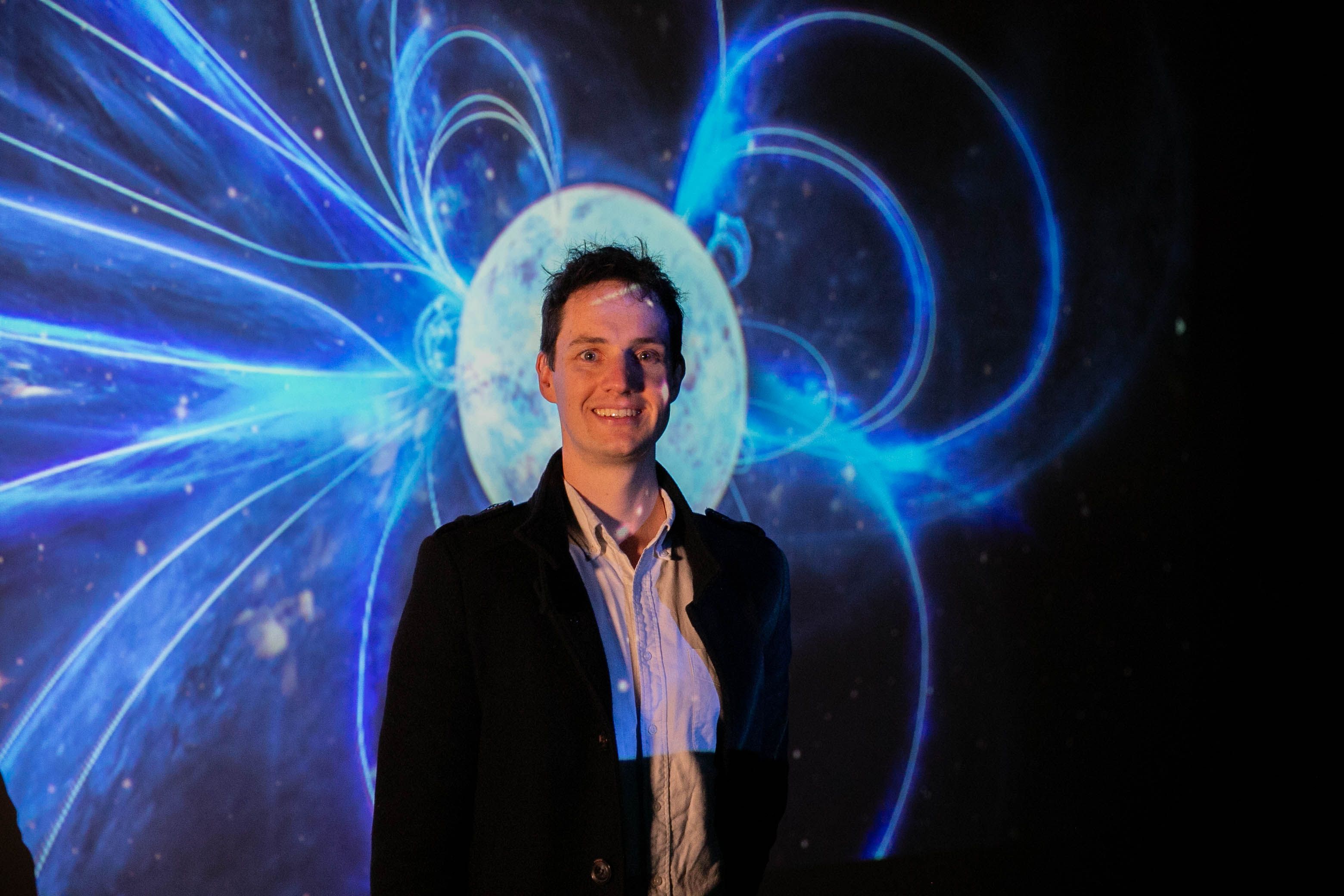Swinburne researcher leads breakthrough in neutron star study
A group of Australian researchers led by Swinburne’s Dr Daniel Reardon have uncovered the secrets of Earth’s closest neutron star, which is spinning as fast as a blender and is on the brink of becoming a black hole. Dr Reardon, along with the ARC Centre of Excellence in Gravitational Wave Discovery (OzGrav) team, have also discovered the mass and radius of the star.

Sponsored by

Swinburne University of Teachnology lead researcher, Dr Daniel Reardon. Credit: Jessie Xu, SUT
In a groundbreaking series of three papers to be published in The Astrophysical Journal Letters, a global group of scientists describe how after almost 30 years of observations from Murriyang, CSIRO’s Parkes radio telescope, together with NICER (Neutron Star Interior Composition ExploreR), NASA’s X-ray telescope on the International Space Station, they have accurately measured the mass and radius of this nearby neutron star.
According to the Australian lead researcher on the project Dr Daniel Reardon, from Swinburne University of Technology and the ARC Centre of Excellence for Gravitational Wave Discovery (OzGrav), a neutron star represents extreme matter on the verge of collapsing into a black hole.
“Being able to measure its mass and radius tells us how squeezable neutron stars are and how matter behaves inside their dense core, which is denser than the nucleus of an atom,” he said.
Physicists use particle accelerators to study matter at its extremes, but these experiments fail to predict the behaviour of the unique matter in the cores of neutron stars. This means neutron stars are some of the best laboratories for physics. Measuring their masses and sizes is a way to get new insights into fundamental nuclear physics.
NICER is on a mission to study neutron star interiors by detecting and mapping X-ray emission from million-degree hot spots on the surface of the star. Swinburne’s Dr Reardon, the OzGrav team, and other researchers using radio data from Murriyang, owned and operated by CSIRO, Australia’s national science agency, provided the mass of the pulsar, a key part of the NICER mission to measure the radius.
Dr Reardon has been observing this neutron star since he was a student with CSIRO ten years ago.
“There were researchers studying the same pulsar with Murriyang for twenty years before me. It’s important that we have long-term data on the star to get accurate information,” he said.

Swinburne University of Teachnology lead researcher, Dr Daniel Reardon. Credit: Jessie Xu, SUT
This is part of the Parkes Pulsar Timing Array (PPTA) collaboration to monitor a set of pulsars over long timescales.
Dr Andrew Zic (CSIRO), Primary Investigator of the PPTA project, says the collaboration’s precise measurements of pulsars with Murriyang has produced highly valuable datasets for many projects.
"This has been made possible by regular upgrades to Murriyang, which has meant that our PPTA data have consistently been of world-leading quality, as seen in this work," Dr Zic said.
By compiling and analysing this large data set, researchers are getting closer to detecting gravitational waves with pulsars. Dr Reardon and the team used this data to support the NICER mission in a novel way.
“At the Parkes Observatory we have been tracking – for decades – tiny (microsecond) delays in the arrival times of pulses sent out the neutron star, caused by space compressing due to the mass of its white-dwarf companion star,” Dr Reardon said.
Space is stretched and squashed by the mass of objects, which is described in Einstein’s theory of gravity. The microsecond delays are predicted by the theory and the detailed information collected over many years allowed the team to accurately calculate the mass of both the white-dwarf star and the pulsar.
With the mass confirmed, the NICER team could then calculate the radius of the pulsar from their data. This helps build a picture of the matter making up a neutron star.
Understanding the matter will allow scientists to better predict the gravitational wave signatures created when neutron stars collide and collapse into black holes. Neutron star collisions release a burst of gravitational waves in an enormous explosion called a kilonova, which can be seen by many telescopes, including Xray telescopes and radio ones.
Swinburne University of Technology and OzGrav’s expert in gravitational wave astronomy Dr Anais Möller says this discovery plays a pivotal role in unravelling the mysteries on neutron stars.
“Measuring the mass and radius of pulsars tells us how neutron stars might get ripped apart and what we can expect to see in the resulting kilonova,” she said.
Dr Reardon says because this pulsar has a mass similar to a typical neutron star, measuring its mass and radius is crucial for understanding the behaviour of matter at extreme densities.
“This research advances our fundamental understanding of how the Universe operates,” he said.